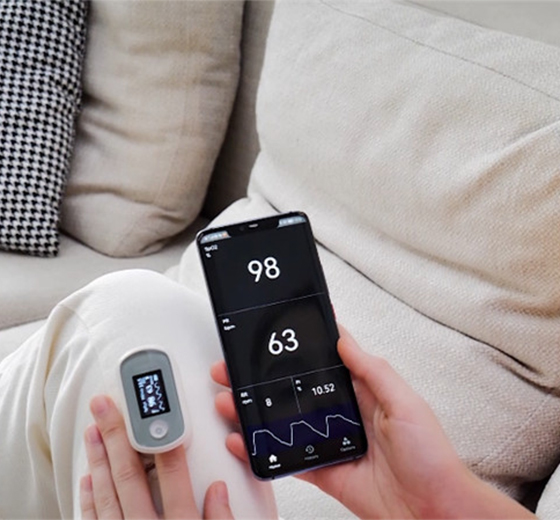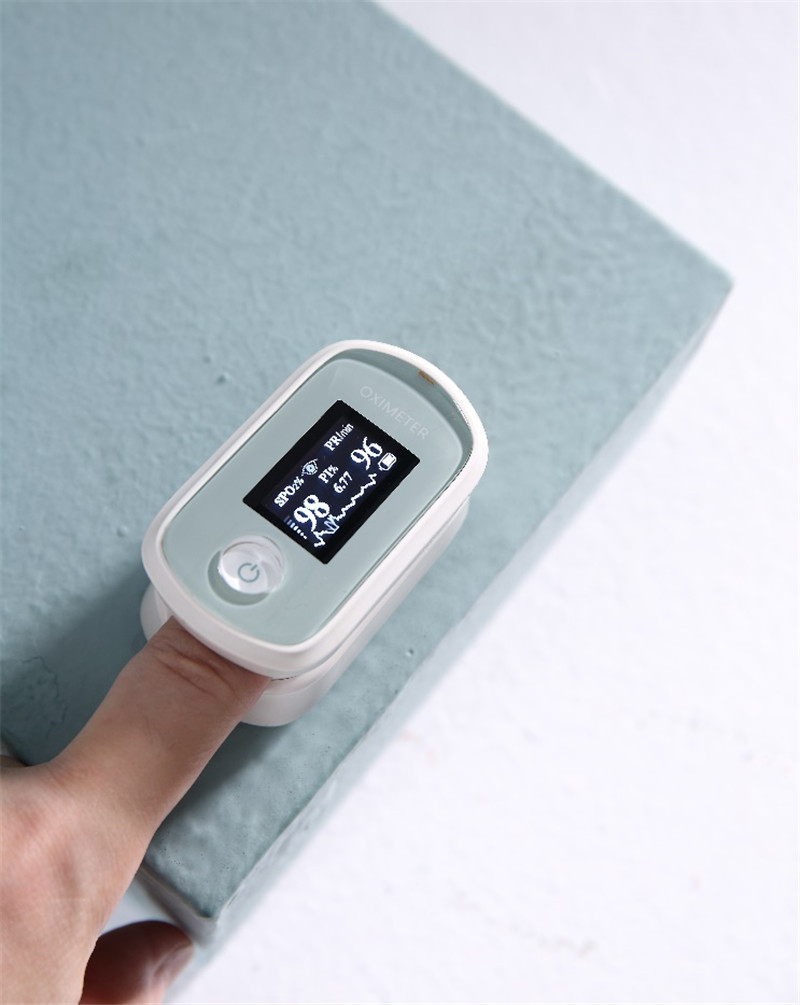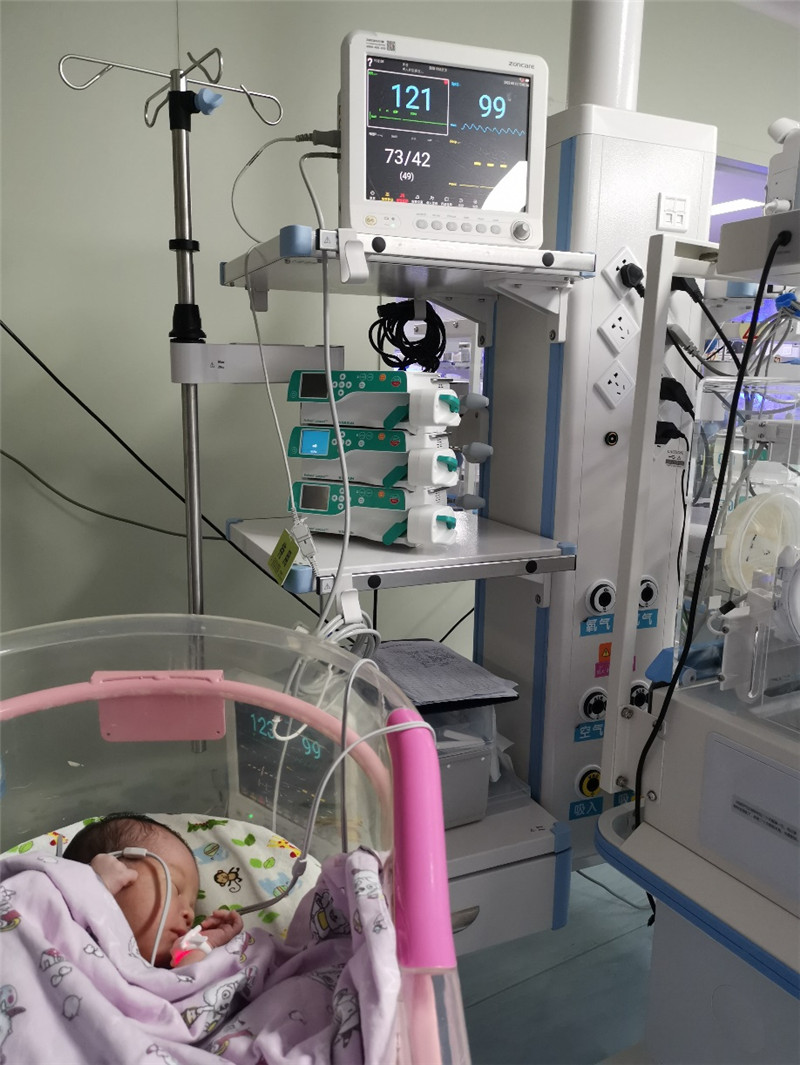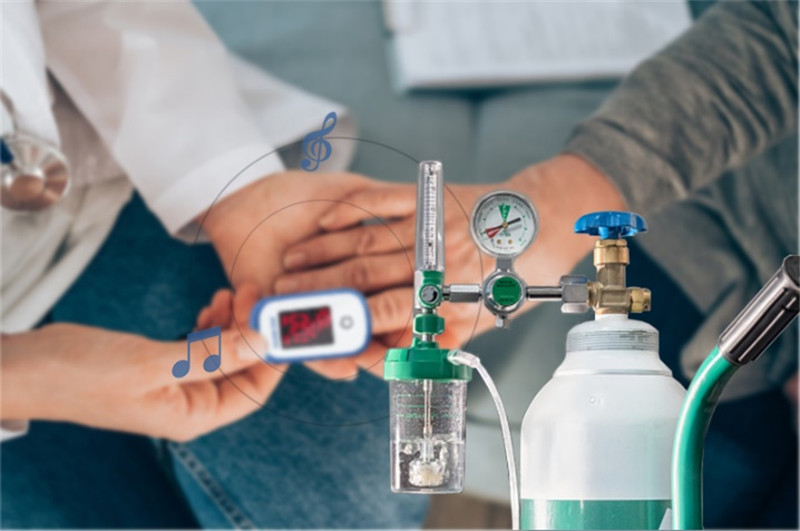oxygen saturation (SaO2) is the percentage of the capacity of oxyhemoglobin (HbO2) bound by oxygen in the blood to the total capacity of hemoglobin (Hb, hemoglobin) that can be bound by oxygen, that is, the concentration of blood oxygen in the blood. important physiological parameters.
Blood oxygen saturation represents the health of the human body and can reflect the health of the human respiratory system and cardiovascular system. It plays an important role in the prevention and diagnosis of human diseases. Therefore, monitoring blood oxygen saturation is very important. physiological meaning.
The clinical non-invasive method of measuring blood oxygen saturation is to use a finger-cuff type photoelectric sensor, and the oxygen saturation of arterial blood is used to replace the oxygen saturation of human tissue. Monitoring arterial blood oxygen saturation can also carry oxygen to oxyhemoglobin in the lungs. It can directly reflect the respiratory function of the lungs. The measurement value of healthy people should be above 95%, and it may be lower in smokers. It is generally considered that less than 90% is a danger signal.

If the blood oxygen content of the human body is reduced, it is easy to cause symptoms such as fatigue and sleepiness, lack of energy, and memory loss. Long-term insufficient blood oxygen content will also cause damage to the brain, heart and other organs.
The brain is the most sensitive part of the nervous system to hypoxia. Mild hypoxia in the brain will cause symptoms such as mental fatigue, inability to concentrate, and memory loss. If the brain continues to lack oxygen, it will lead to the death of nerve cells, and it is easy to affect the function of other systems, which is life-threatening. If the hypoxia is aggravated, or acute hypoxia, people's sense of direction and motor coordination will be gradually lost, and in severe cases, disturbance of consciousness, coma, and even death will occur.
Like the brain, the heart is an organ that consumes a lot of oxygen and has a high metabolic rate. When the heart is mildly hypoxic, the compensatory heart rate increases first, the heartbeat and cardiac output increase, the circulatory system compensates for the lack of oxygen content in a hyperdynamic state, and at the same time produces blood flow redistribution, cerebral and coronary vessels. Selective expansion to ensure sufficient blood supply will cause symptoms such as heart beat rhythm disorder and palpitation. When the heart continues chronic hypoxia, due to the accumulation of subendocardial lactic acid, ATP synthesis decreases, resulting in myocardial depression, resulting in bradycardia, premature contraction, decreased blood pressure and cardiac output, as well as arrhythmias such as ventricular fibrillation and even ventricular fibrillation. asystole. When the heart is severely hypoxic, it will lead to myocardial hypertrophy and cardiac volume hypertrophy, the performance of the heart will decline, and heart failure will easily occur. .
In addition, related research outside the medical field has confirmed that monitoring blood oxygen saturation has important guiding significance for guiding the treatment of cardiovascular disease and estimating prognosis.

In order to effectively avoid various body damages caused by hypoxia, it is of great significance to monitor blood oxygen saturation in daily life. From the emergence of the method of monitoring blood oxygen saturation to the present, pulse oximeter has been widely used in clinical practice due to its advantages of non-invasive, safe and reliable, easy to use, effective, continuous and timely, and cheap. It has become a very important medical diagnostic equipment in the emergency room, operating room and intensive care room of the hospital.
For example, in the emergency room, the blood oxygen monitor can continuously monitor the blood oxygen saturation of the patient, and then determine the oxygen supply according to the measured blood oxygen saturation value, in order to ensure the safe and successful delivery of oxygen.
In the operating room, the blood oxygen monitor can continuously measure the oxygen saturation, especially for critically ill patients and operations with poor ventilation, it can quickly provide the patient's blood oxygen quickly, so that doctors can take corresponding rescue measures immediately. In the monitoring room, the blood oxygen monitor can set the corresponding alarm items according to the corresponding condition. When the patient is found to have apnea, low blood oxygen saturation value, fast heart rate, slow heart rate, etc. corresponding alarm.
In addition, it is also extremely important in neonatal monitoring, especially sensitive to the identification of hyperoxia or hypoxemia in neonates and premature infants, and then adjust the oxygen supply of the oxygen supply equipment in real time according to the monitoring results to avoid nuisance to the newborn. damage to the brain, eyes, and lungs of children. At the same time, more and more household wearable oximeters have also come into people's attention, and are widely used in diagnosis, screening, self-management and so on.


For example, monitoring the state of blood oxygen saturation in time to understand the user's respiratory system and cardiovascular health, so as to diagnose whether they have hypoxemia as soon as possible, so as to effectively prevent or reduce accidental death caused by hypoxia.
In addition, the oximeter can also be used for the screening of swallowing disorders, the screening of sleep apnea syndrome, and the screening of blood gas measurement. Finally, the home oximeter also has the following self-management functions - such as the guidance of oxygen therapy, and patients with chronic respiratory problems can usually conduct self-management at home.
In addition, blood oxygen monitors are also widely used in medical clinical research and other fields. For example, in the study of sleep breathing oxygen saturation, the monitoring of blood oxygen saturation is used to diagnose whether a patient has sleep apnea syndrome or night oxygen saturation. Low saturation and other conditions, the final diagnosis of chronic obstructive tracheal disease.
It can also be used in the research of sports human health and plays an important role in many other fields such as: military, aerospace and so on. In the future, portable blood oxygen saturation monitors will be widely used in home health care and community health care, which will be of great significance to human disease prevention and diagnosis. In the research and development strategy of oximeter, Narigmed , committed to continuously improving the measurement accuracy of the oximeter, continuously optimizing the weak perfusion performance and anti-exercise performance, and expecting to bring good news to more people, Narigmed blood oxygen technology has independent intellectual property rights, and in weak perfusion PI = 0.025 % It can still maintain the accuracy of blood oxygen and pulse rate measurement under ultra-low weak perfusion and a certain frequency of fixed motion and random motion, which is undoubtedly the leader among Chinese medical device companies.
Post time: Jan-02-2023







